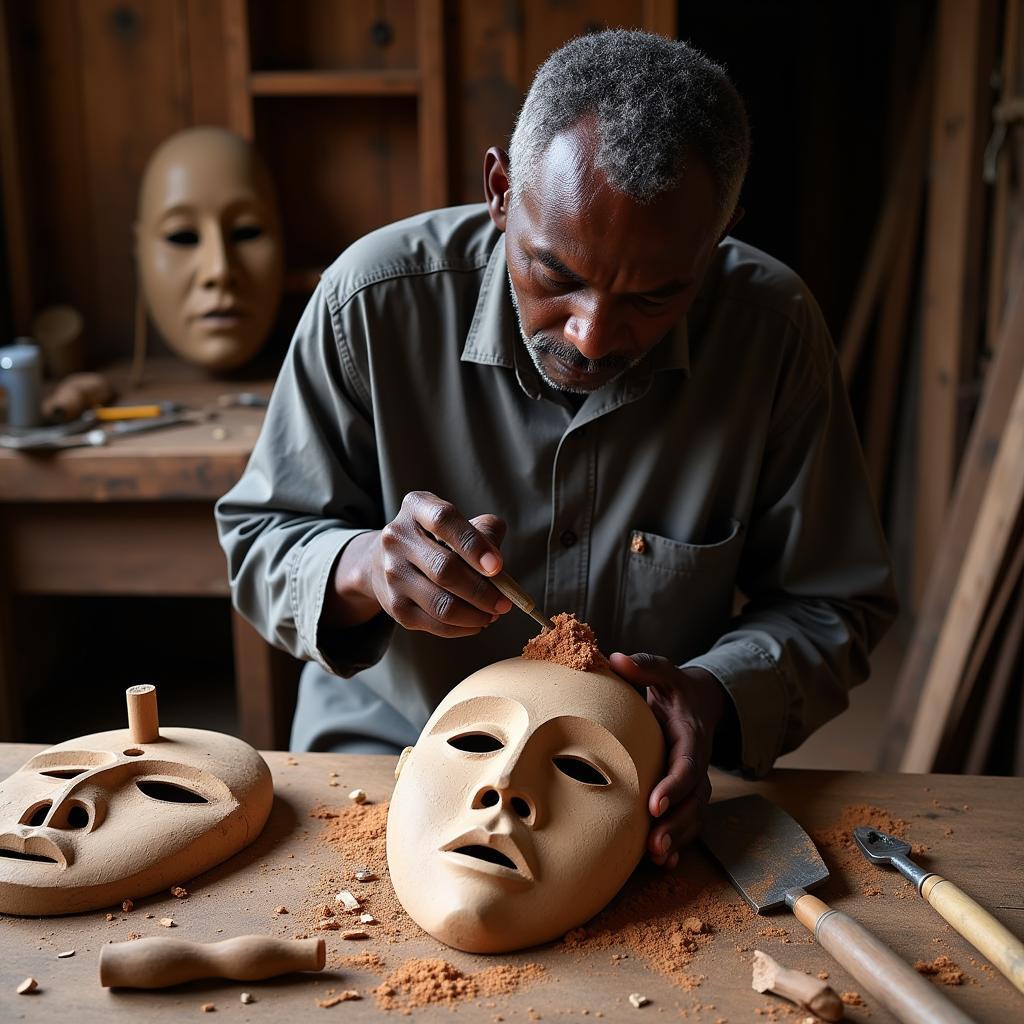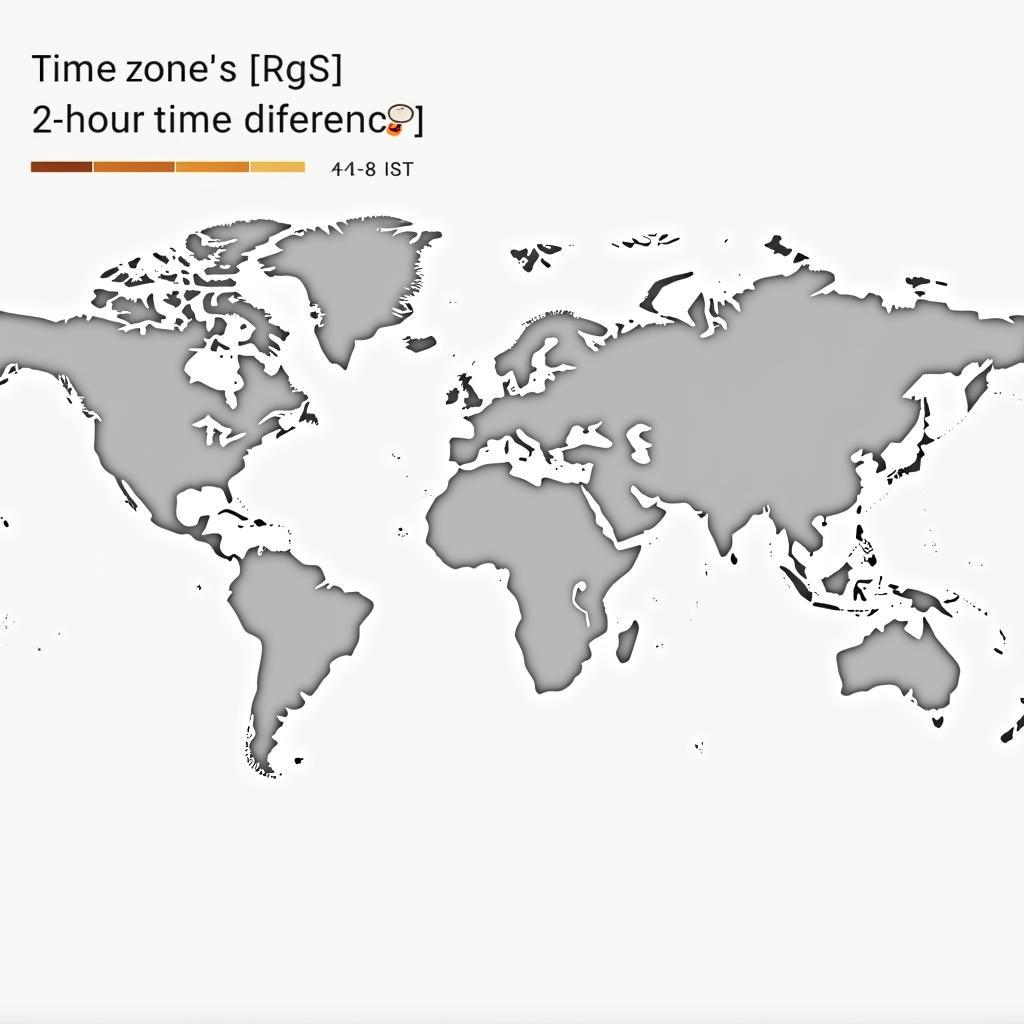Unmasking the African Bwa Mask: History, Symbolism, and Artistry
African Bwa Masks are more than just captivating artifacts; they are powerful symbols deeply embedded in the cultural fabric of the Bwa people of Burkina Faso. These masks, with their distinctive planar forms, geometric designs, and often imposing size, play a vital role in Bwa rituals, ceremonies, and social life. They represent spirits, embody ancestral wisdom, and connect the present with the rich tapestry of Bwa history.
The Bwa People and Their Artistic Heritage
The Bwa people, primarily located in Burkina Faso and parts of Mali, are known for their rich artistic traditions, which extend beyond mask carving to include sculpture, textiles, and music. Their art is not merely decorative; it is functional and deeply spiritual, serving to maintain social order, communicate with the spirit world, and celebrate life’s milestones. Bwa masks, in particular, are central to these practices, representing a tangible link between the human and the divine.
The Significance of Bwa Masks in Rituals
Bwa masks are often used in agricultural ceremonies, initiation rites, and funerals, embodying various spirits and ancestors. The masks are not seen as mere representations but rather as the actual embodiment of these spirits during the rituals. The wearer becomes a vessel for the spirit, mediating between the human and spiritual realms.
These ceremonies are not merely performative; they are integral to Bwa social structure and their understanding of the world. The masks, through their presence and the dances associated with them, ensure good harvests, successful initiations, and peaceful transitions to the afterlife.
The Distinctive Style of Bwa Masks
Bwa masks are instantly recognizable due to their unique artistic style. Often large and planar, they feature bold geometric designs that reflect the Bwa’s appreciation for abstract forms and symbolic representation. The plank-like faces, often with rectangular noses and small, slit-like eyes, are both imposing and enigmatic.
The Symbolism Behind the Designs
The geometric patterns found on Bwa masks are not merely decorative; they carry symbolic meaning. Horizontal lines often represent the earth, while vertical lines symbolize the sky. Zigzags may represent water or lightning, while other motifs embody various animals or natural phenomena. These designs, passed down through generations, encode a complex system of beliefs and values central to Bwa cosmology.
The colors used on Bwa masks also hold significance. Black often symbolizes the night and the spirit world, while white represents purity and the ancestors. Red may symbolize life force or power. These colors, in combination with the geometric designs, create a visually striking and symbolically rich work of art.
Bwa Mask Carving: A Tradition Passed Down Through Generations
The creation of a Bwa mask is a skilled process, passed down through generations of carvers. Typically carved from lightweight wood, the masks are carefully shaped and then painted with natural pigments. The knowledge of the appropriate wood, tools, and techniques is essential, as is the understanding of the spiritual significance of the mask being created.
“The carving of a Bwa mask is not just a craft; it’s a spiritual practice,” explains Dr. Amadou Kambara, an anthropologist specializing in West African art. “The carver is not merely creating an object; they are channeling the spirit that the mask will embody.”
The Role of the Carver in Bwa Society
Bwa mask carvers hold a respected position in their communities. They are not only skilled artisans but also keepers of cultural knowledge. They are responsible for ensuring the continuity of Bwa traditions and the proper creation of these powerful objects.
 Bwa Mask Carver at Work
Bwa Mask Carver at Work
“The skill and knowledge of the carver are crucial in ensuring the efficacy of the mask in rituals,” adds Dr. Kambara. “A properly carved mask is not just beautiful; it is powerful.”
Conclusion: Appreciating the Art and Culture of the African Bwa Mask
The African Bwa mask is more than just a beautiful object; it is a window into the rich cultural and spiritual world of the Bwa people. By understanding the history, symbolism, and artistry behind these masks, we gain a deeper appreciation for the vital role they play in Bwa life and the enduring power of African art.
FAQ
- What are Bwa masks made of? Bwa masks are typically carved from lightweight wood.
- Where are the Bwa people located? The Bwa people are primarily located in Burkina Faso and parts of Mali.
- What is the significance of the geometric patterns on Bwa masks? The geometric patterns carry symbolic meanings, representing elements of nature and Bwa cosmology.
- What role do Bwa masks play in rituals? Bwa masks embody spirits and ancestors during ceremonies, mediating between the human and spiritual realms.
- Who carves Bwa masks? Skilled carvers within the Bwa community create the masks, passing down their knowledge through generations.
- What are the primary colors used on Bwa masks and their meanings? Black symbolizes the night and spirit world, white represents purity and ancestors, and red signifies life force or power.
- Are Bwa masks still used today? Yes, Bwa masks continue to be used in traditional ceremonies and rituals.
Need More Information?
Explore other articles on our website about African art and culture. Learn more about the diverse mask traditions across the continent, the role of art in African societies, and the rich history of the Bwa people.
Contact us for assistance at Phone Number: +255768904061, Email: kaka.mag@gmail.com, or visit us at Mbarali DC Mawindi, Kangaga, Tanzania. We have a 24/7 customer service team.


